The Accidental Ecosystem
Air Date: Week of January 6, 2023
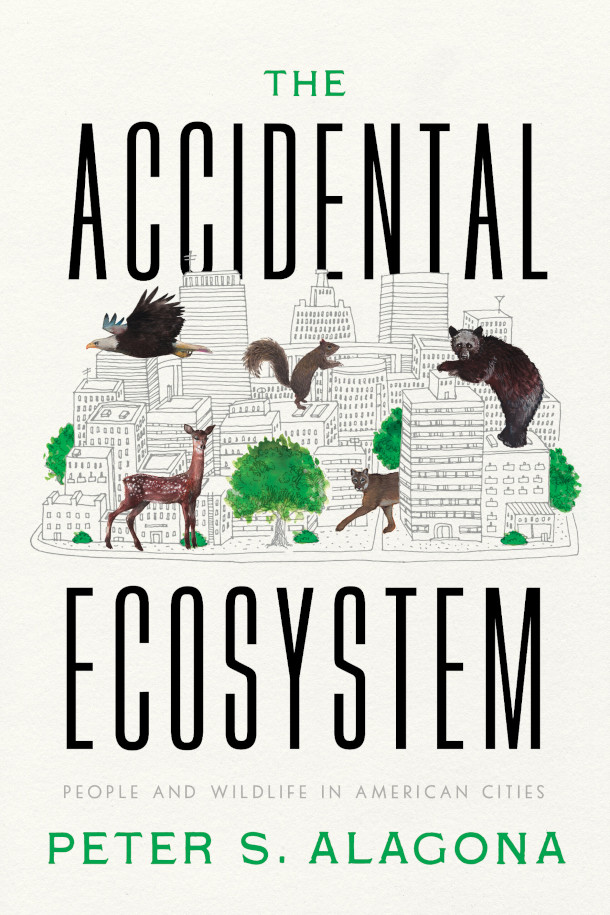
Peter Alagona’s 2022 book “The Accidental Ecosystem: People and Wildlife in American Cities.” (Photo: Courtesy of University of California Press)
Many non-human animals call cities home or take advantage of their abundant resources. In his 2022 book The Accidental Ecosystem: People and Wildlife in American Cities, environmental historian Peter Alagona explores how other species have found ways to live among us. He joins Host Jenni Doering to discuss how being more intentional about how we design and use our cities in the future can bring benefits for both humans and the wildlife we share these spaces with.
Transcript
CURWOOD: It’s Living on Earth, I’m Steve Curwood.
DOERING: And I’m Jenni Doering
Gray squirrels are common in most US cities, but you might be surprised to learn they’re a relatively recent arrival, moving to the urban jungle in the mid 19th century. In fact, for a long time cities were devoid of most wildlife we take for granted today. Even pigeons, crows, and raccoons, were scarce. Eventually the wildlife we now consider common found homes among us. In his 2022 book “The Accidental Ecosystem: People and Wildlife in American Cities,” environmental historian Peter Alagona explores that transformation. Peter is a professor of Environmental Studies at the University of California, Santa Barbara. Welcome to Living on Earth, Peter!
DOERING: So cities without squirrels... Really? I mean, come on! Take us back to the time when wildlife were absent from our cities. Why were they like that?
ALAGONA: You know, it's such a funny question, because when I was writing this book, and telling that story, I didn't anticipate that that would be one of the stories that would jump out to people and trigger their curiosity and cause a lot more questions to be asked. But in the months since the book has come out, I've got a lot of questions about squirrels because these are such a common, well known feature of urban landscapes throughout the United States, and in fact, throughout much of the world. But it wasn't always that way. Eastern grey squirrels were native to the eastern portion of North America in forested habitats, in places like New England and into the Midwest and portions of the southeast. But over the course of a century or so, following European colonization, they were hunted for their fur and for food, they were eradicated as pests and their habitats were felled, the forests that they lived in, were felled in many areas. And so by the 18th century, Eastern grey squirrels were missing from a lot of their former range, including in cities like New York and Philadelphia, where we know them, you know, so well today. And so it wasn't until really the middle part of the 19th century that they started to come back. And that was really for two reasons: one was that people started to bring them back, people actually had been keeping them as pets, as kind of exotic pets in a way, during those years when they were so rare in that part of the country. But also, in addition to people bringing them back and reintroducing them, new habitats were created for them, cities started to plant more trees along streets, they started to construct new parks, like Central Park in the mid 19th century, and plant trees in those places that would then provide urban habitats for the species that had lived in these regions, but then was largely lost. And so this is just one example, but a really good one, of the ways in which our modern cities have attracted so much wildlife, including species that have returned and, in some cases, new species that were never really there before.
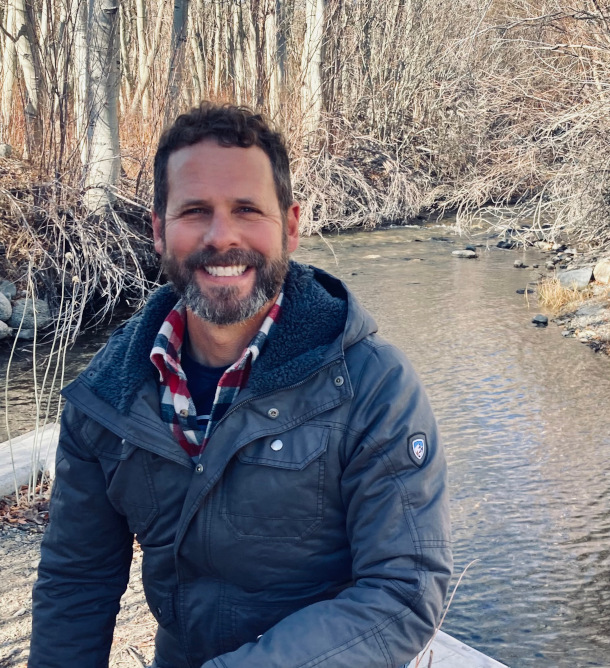
Peter Alagona is the author of “The Accidental Ecosystem: People and Wildlife in American Cities.” (Photo: Courtesy of Peter Alagona)
DOERING: So what kinds of animals do well in urban spaces?
ALAGONA: There's a way of thinking about this that's developed over about the past 20 years: we can divide animals with regard to their success or inability to live in urban areas into three categories. Now, keep in mind that this is much more nuanced, and it changes over time, but it's at least a way to start. So one group of animals that we might all recognize in relation to urban areas are the urban exploiters. Now, these are creatures that do really well in cities, and as a result, tend to occur in large numbers and in many urban areas throughout the world. And so we can all think of examples of that. These are the pigeons, the crows, the rats that you see in urban areas whether you're in North America or South America, Asia, Europe, wherever you happen to be. Then there's a group of animals that tend to be referred to as the urban adapters. Those are creatures that can do well in and around cities, but tend to require some wildland area nearby, or at least some green space in which they can seek refuge, perhaps during the day when there are a lot of people out kind of going about their business. And so this includes animals like raccoons or coyotes or foxes, some raptors or owls or large wading birds like the blue herons. And then there's a group of animals that we call the urban avoiders, which are the ones that do really poorly in cities, for any number of different reasons and are rarely seen there. Sometimes these are large bodied animals that travel long distances to forage or find mates. Or they can be creatures that are just kind of hard for people to live with, in areas where there are a lot of people living in the same place. And so this includes animals like pumas, for example. I think one of the things to recognize about this is that if you look at the exploiters, the creatures that do really well in urban areas, they tend to share a set of characteristics or qualities.
DOERING: And what are those characteristics?
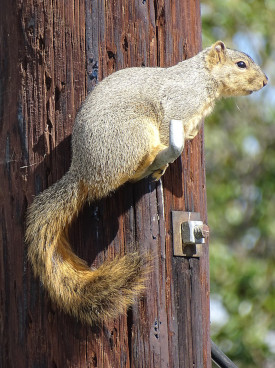
Many may think of gray squirrels as ubiquitous to the average American city, but they only began to settle in urban environments in the mid-19th century. (Photo: Adam Jones, Wikimedia Commons, CC BY-SA 2.0)
ALAGONA: They tend to be social. So they are relatively comfortable around large groups of their own kind, large numbers of their own species. They tend to have cultures where they learn things and experiment and then pass on their knowledge to their young. They tend to be relatively flexible, so they can live in a lot of different kinds of habitats. They tend to have relatively large brains, maybe, in relation to other animals that are closely related to them. That's an area of ongoing research. And, crucially, they tend to be omnivores, which means that they can harvest a wide variety of resources as food that they might find in urban areas. But you know what the funny thing is, Jenni? If you think about putting all of these qualities together: social, cultural, omnivores, relatively large brains. That sounds to me a lot like people. And so one of the things that we can notice about urban exploiters, creatures that tend to do really well in urban environments, is that they have some qualities that are something like the qualities that we have.
DOERING: Wow, that's fascinating. I would never have thought of that before.
ALAGONA: But you know, if you think about exploiters, one of the most common exploiters, of course, are rats. And rats are also used as model organisms for biomedical research. There are reasons for that, so they're easy to breed, they're easy to keep, there's relatively little controversy around using them for experimentation. But also, because they're enough like people that we can learn something from studying them. And I know that the listeners in your audience don't necessarily want to hear that they're like rats, but we do have things in common with creatures with which we share our habitats.
DOERING: Yeah, we're not really that different from these other critters that we live among. So Peter, of course, it isn't always easy living with wild animals nearby. How much of a real threat do predators like bears, pumas and coyotes pose to urbanites? And what are some examples of ways to prevent this wildlife human conflict?
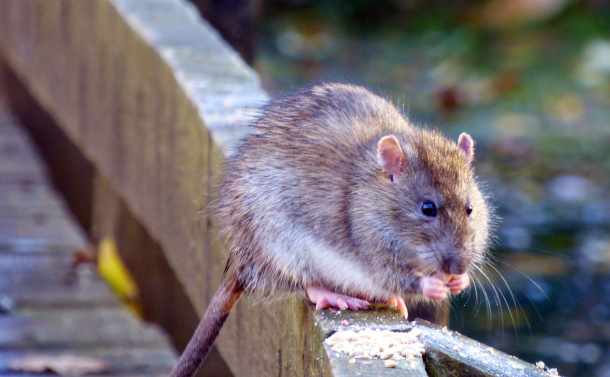
Animals that thrive in cities tend to be social, intelligent, and omnivorous – much like human beings. (Photo: Pete Beard, Flickr, CC BY 2.0)
ALAGONA: I think that our views of the risks that are out there and the conflicts that occur are very much conditioned by the media. Unfortunately, when we get our information from the media, we get a lot of different kinds of signals and, oftentimes, conflicts are what's emphasized over coexistence. So if there's a particular incident that happens with a coyote, for example, or with a fox or a raccoon, we hear about it, we don't hear about all the days and all the times that nothing happens at all, and we go about living together in our communities. And so as a result, the concerns over living with urban predators are often believed to be much greater than they are, in general, these animals are very predictable, they tend to not be aggressive toward people, and they tend to live among us, sometimes for a long time without us even really knowing it. You know, there are some other potential issues that can arise. Sometimes people get gophers in their garden or other sorts of things. And the best thing to do in that case, is to, oftentimes, to not focus quite so much on eradicating the animal, which is, oftentimes, the approach of pest control. But really thinking about the kind of habitat you're creating, in and around your apartment, in and around your home. And whether or not the habitat you're creating is drawing in the kinds of animals that you want to live in close contact with. If there are ways to modify the habitat a little bit to discourage some of the creatures you want to see less of and encourage some of the ones you want to see more of: the plants, we put it outside our homes, the gardens we construct, the ways that we move through our neighborhoods, whether we speed down our streets in our neighborhoods. All of these things are subtly altering the urban habitat in ways that inventive, in some cases ingenius, urban animals are able to take advantage of. The reason I called this book "The Accidental Ecosystem" is that part of my argument is that we ended up getting a lot of wildlife in urban areas unintentionally, as a result of decisions that people often made decades ago and for other reasons. People started planting trees in cities in the 19th century, not because they were trying to attract squirrels. But because they thought it was going to be better for human health and well being to have cities with trees, to have cities with shade.
DOERING: Which is also true.
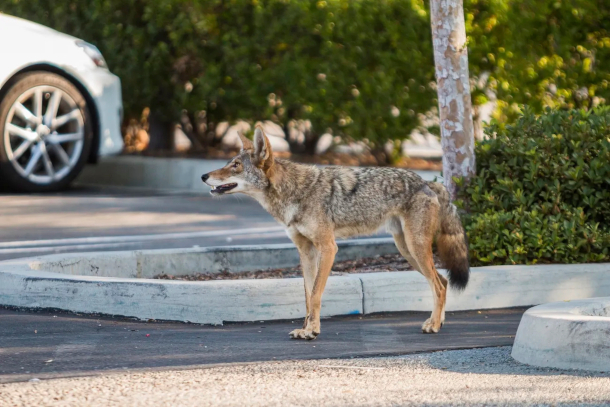
Coyotes can be drawn to urban areas, but intentional city design can help limit human-wildlife conflict. (Photo: Connar L’Ecuyer, National Park Service, public domain)
ALAGONA: Which is also true. And so it seems to me that if we want to move forward and think about moving from an 'accidental ecosystem', to a more intentional urban ecosystem, where we're really thinking through the kinds of creatures we want to surround ourselves with the kinds of habitats we want to create, the kinds of ways that we can foster thriving and coexistence, not just for wildlife, but also for people, then maybe it pays to think about these places as multi-species communities, to think about being more intentional in the ways that we construct urban habitats, thinking forward about the kinds of creatures that are going to be around us as a result of that. And then also thinking about how that relates to human health and well-being. If we do that, how will that help us to craft better cities, better urban areas in the future?
DOERING: Yeah. Speaking of that, how do you envision wildlife in the cities of the future? What might that look like in the US in 100 years time?
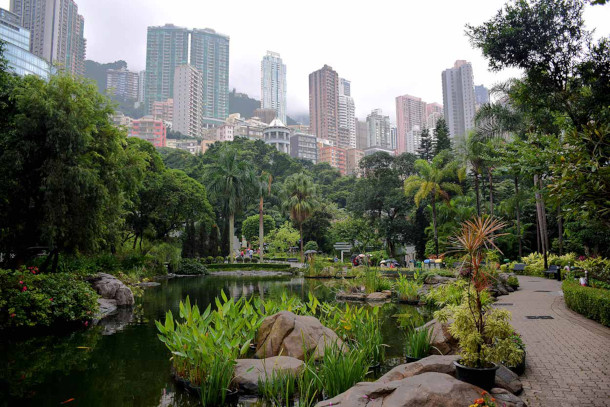
People started planting trees in cities and constructing urban parks for human health, inadvertently creating habitat for other animals. (Photo: Marc, Metrotrekker, CC BY-SA 4.0)
ALAGONA: I don't know what that's going to look like, but here's what I will say. Just this move from this idea that cities are for people and when wild creatures show up there, it's either something that's bizarre, or something that's funny or a spectacle or it's a problem that needs to be dealt with, through pest control, through eradication, moving from that view, to the view that cities are habitats, they're shared habitats, and they're multi-species communities, that alone is a move that then shifts how we think about everything we do in those spaces. So, for example, if we're thinking about transportation, and we want to build a transportation system for the future, well, that has to accommodate a growing population, it has to accommodate changing needs, changing distribution of people on the landscape, it's definitely going to need to accommodate changing technologies as we move, for example, to driverless cars and things like this. But also, how can it better accommodate wild creatures? We know that roads are the source both of isolating populations of wildlife, animals that can't cross roads to travel to other patches of habitat. We also know that roads are sites where a lot of animals die through roadkill. How can we reduce that? Well, we know for example, that roadkill does not happen randomly. It tends to happen in particular areas where wildlife, wild creatures are crossing from one patch of habitat to another. And so if we just think about that, then suddenly we can say, well, wait a minute, maybe those are areas where we should increase lighting, where we should reduce speed, where we should provide signs, where we should maybe do law enforcement as well, education, because when people have auto collisions with wild animals, it's a danger to them as well as the creatures. It's also a threat to private property. And so focusing on those sorts of questions, I think, in a more focused and enduring way over time, I think will enable us to rethink cities in ways that helps people live with creatures, that reduces the risks of living with them, and that enables us to live side by side in cities that will inevitably look very different 100 years from now than they do today.
DOERING: Yeah. Before you go, Peter, are there any species that you're really happy to have around in your city?
ALAGONA: Absolutely, yeah. I mean, I'm happy to have every creature that I run into, every wild creature is a source of fascination to me. But if I had to name one, I would say this. A few years ago, I was living in a home just about a mile and a half from from where I'm living now. And one year we had a pair of great horned owls that nested in a Canary Island date palm tree, and exotic tree right across the street. They laid three eggs, gave birth to three chicks, two of them survived and fledged. And over the course of this several month process, we had these two amazing great horned owls living across the street from us, flying around our neighborhood from tree to tree, hooting in the evenings, hunting, we found lots of parts of animals, rats and other animals, maybe creatures that we didn't want to see around as much as the owls.
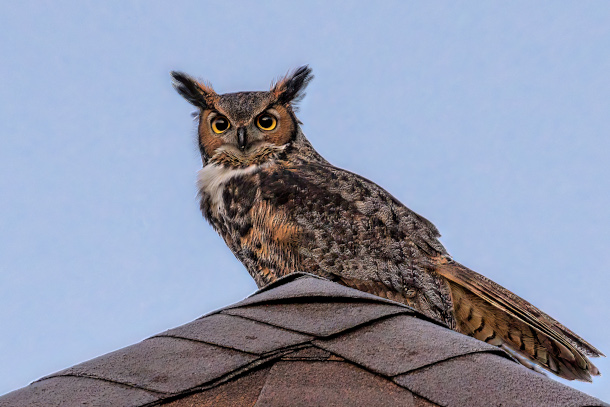
Great Horned Owls are one of the most common owls in North America and equally at home in forests and cities (Photo: Tim Lumley, Flickr, CC BY-NC-ND 2.0)
DOERING: Yeah.
ALAGONA: And so the owls were performing this incredible service for us. We got to see the chicks fledge and fly away. And not only that, but through this process, I got to meet neighbors, community members who I'd never had an opportunity to meet before, because we were all out there in the evenings, watching these owls and paying attention to them and following them and their chicks. And it was just a wonderful community experience. And so I look back on that as a very formative moment when I realized that, you know, coexistence with wildlife, it's not just about people and other animals. It's about people and people. And there are cases in which living with wildlife can bring us closer to our human neighbors as well.
DOERING: Peter Alagona is a Professor of Environmental Studies at the University of California, Santa Barbara and the author of "The Accidental Ecosystem: People and Wildlife in American Cities". Thank you so much, Peter.
ALAGONA: Thank you, Jenni.
Links
Living on Earth wants to hear from you!
Living on Earth
62 Calef Highway, Suite 212
Lee, NH 03861
Telephone: 617-287-4121
E-mail: comments@loe.org
Newsletter [Click here]
Donate to Living on Earth!
Living on Earth is an independent media program and relies entirely on contributions from listeners and institutions supporting public service. Please donate now to preserve an independent environmental voice.
NewsletterLiving on Earth offers a weekly delivery of the show's rundown to your mailbox. Sign up for our newsletter today!
 Sailors For The Sea: Be the change you want to sea.
Sailors For The Sea: Be the change you want to sea.
 The Grantham Foundation for the Protection of the Environment: Committed to protecting and improving the health of the global environment.
The Grantham Foundation for the Protection of the Environment: Committed to protecting and improving the health of the global environment.
 Contribute to Living on Earth and receive, as our gift to you, an archival print of one of Mark Seth Lender's extraordinary wildlife photographs. Follow the link to see Mark's current collection of photographs.
Contribute to Living on Earth and receive, as our gift to you, an archival print of one of Mark Seth Lender's extraordinary wildlife photographs. Follow the link to see Mark's current collection of photographs.
 Buy a signed copy of Mark Seth Lender's book Smeagull the Seagull & support Living on Earth
Buy a signed copy of Mark Seth Lender's book Smeagull the Seagull & support Living on Earth

